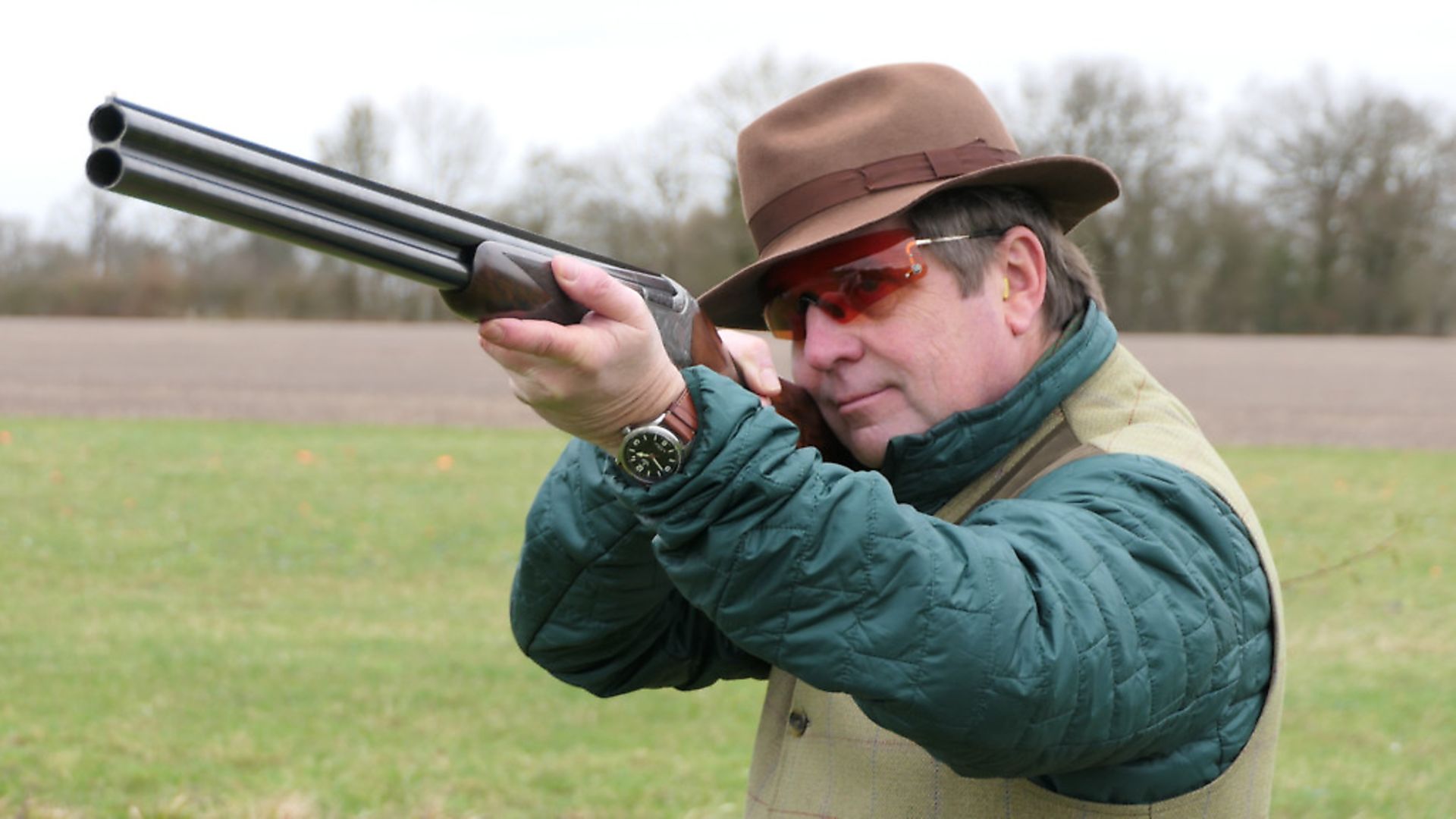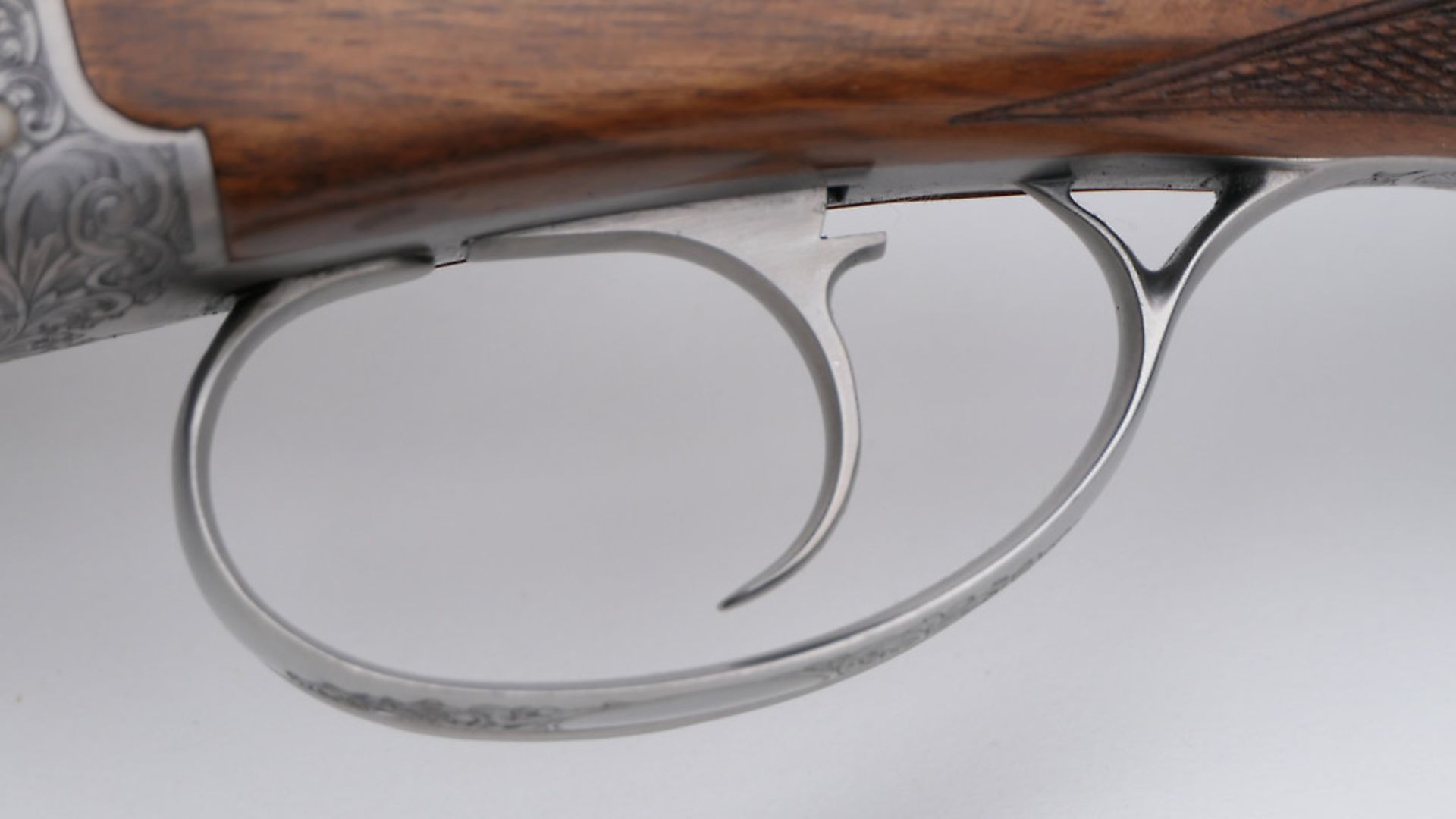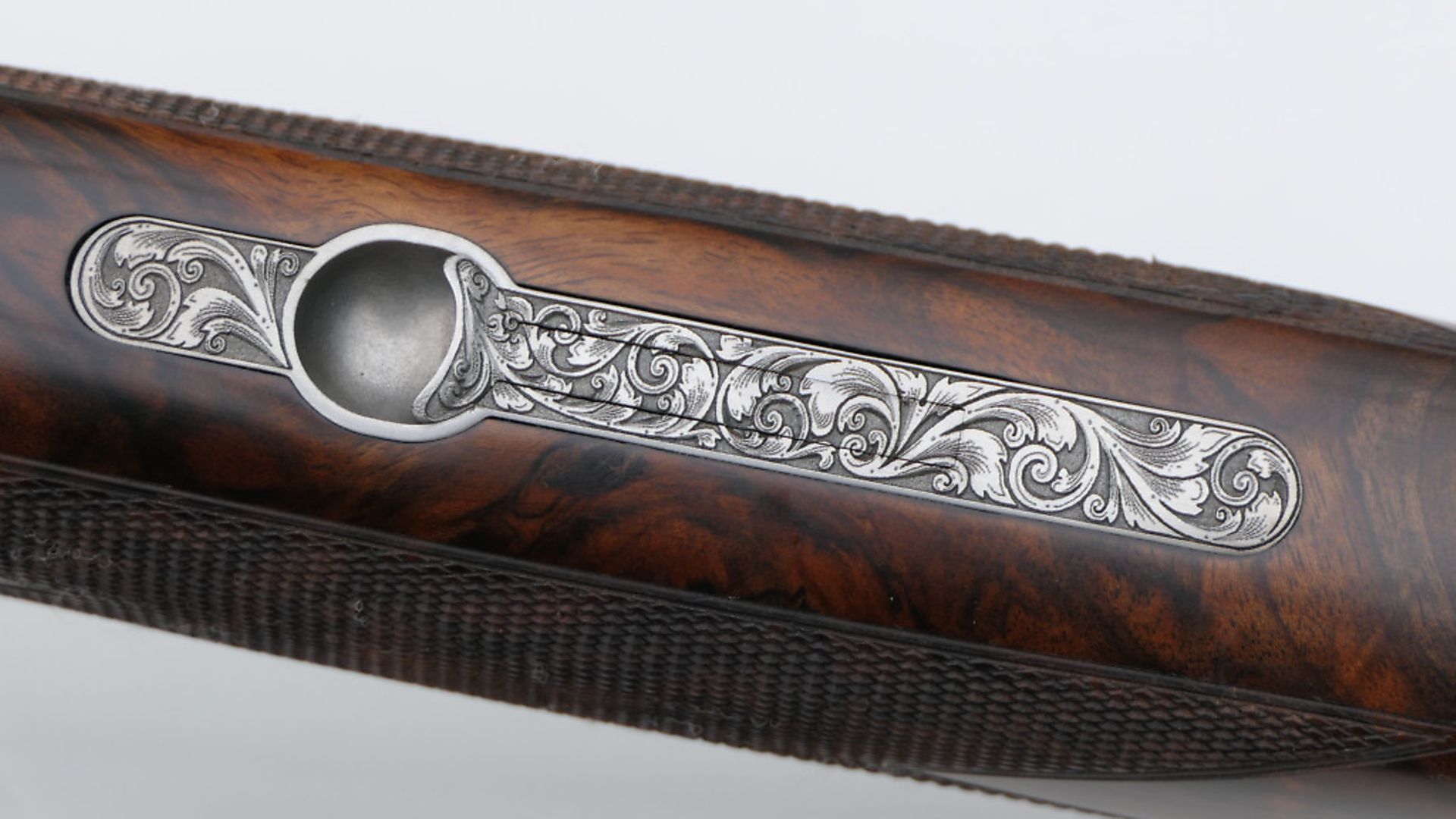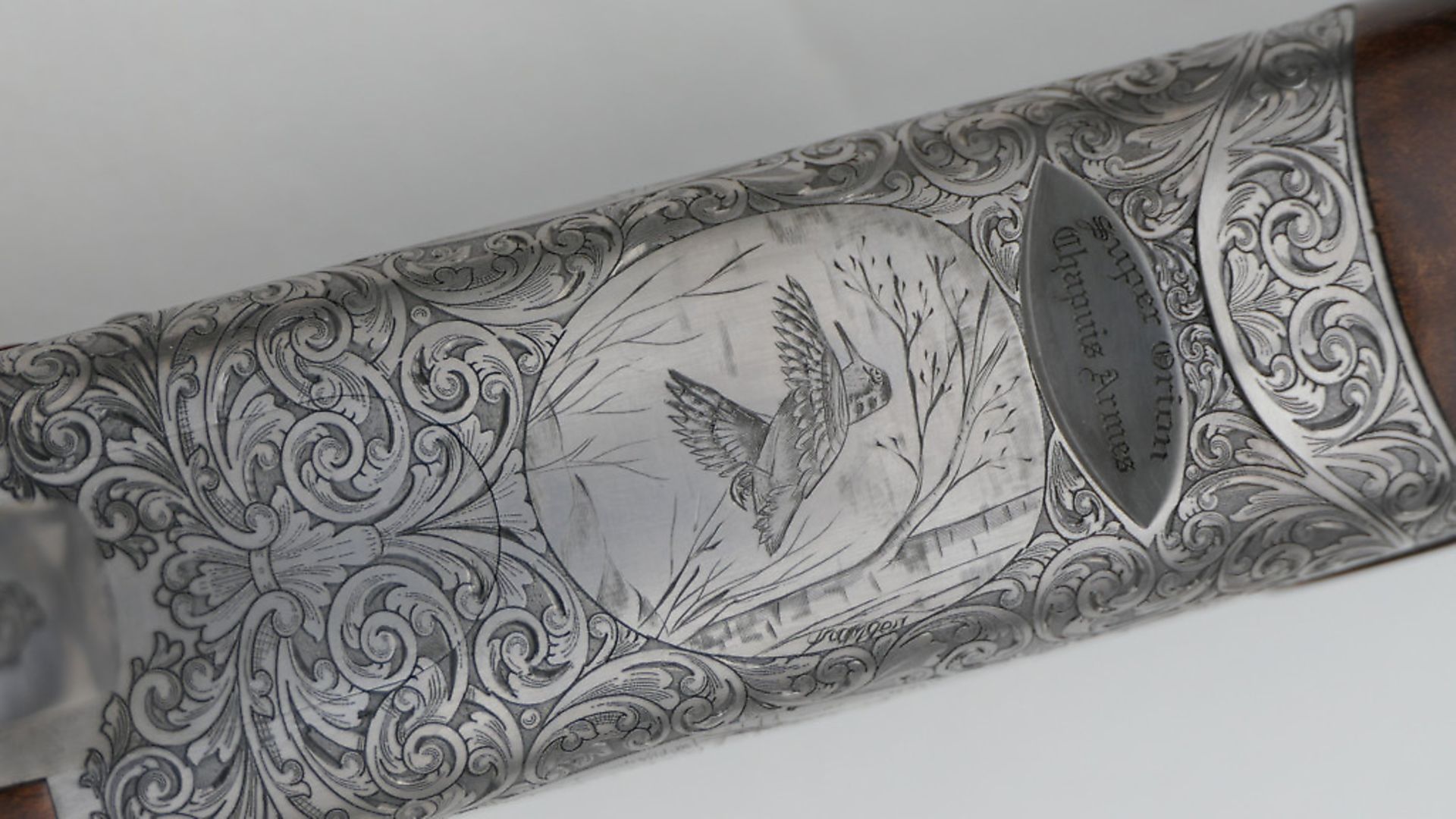Well conceived and put together, the Chapuis C135 Artisan Super Orion is both pretty and pointable, with a pleasing nod to the integrity of older guns, says Mike Yardley
 credit: Archant
credit: Archant
BRIEF OVERVIEW - CHAPUIS C135 SUPER ORION ARTISAN
WE LIKED: The looks and overall form; The engraving; The quality of finish
WE DIDN’T LIKE: The front heavy balance – but the gun still shot very well.
Make/model: Chapuis C135 Super Orion Artisan (12-BORE)
Action type: bifurcated lump round bar over and under with central bolting
Chamber: 3’’ (fleurs de lys for steel)
Multi-chokes: yes (5 supplied)
Weight: 7 pounds 5 ounces
RRP. £6,745
 credit: Archant
credit: Archant
IN DEPTH TEST AND REVIEW - CHAPUIS C135 SUPER ORION ARTISAN
This month’s test gun is the smart C135 Artisan Super Orion over-and-under, now imported into the UK by GMK (Beretta now have the controlling interest in Chapuis, as they do in GMK itself). It has 30” barrels, multichokes, 3” steel chambers (steel-shot proofed), a mechanical non-selective single trigger, and weighs in at a mid weight of 7lb 5oz. The 7-5mm sighting rib and joining ribs are solid; the stock is of semi-pistol pattern.
First impressions are very positive, aided by strikingly-figured wood and really nice, hand-cut deep scroll and game scene engraving – pheasants on one side, partridge on the other and a woodcock below.
The weight is about right for a ‘do anything’ gun too. You could shoot driven game, wildfowl or go clay busting with this upmarket but not OTT model.
The mechanical trigger is always an advantage in a field gun because it is not recoil dependent. Multichokes are useful too, especially as here there appears to be little thickening at the muzzles (no tromboning) to accommodate them (some multi-choke guns are afflicted with an over-heavy front end because of this).
The engraving and finish seem particularly good. Chapuis’s less expensive C35 model features laser-cut engraving (which still looks good). The C135 is not a cheap gun at £6,745 (£6,075 with fixed chokes), but there is evidence of considerable traditional benchwork – French guns always seem to score highly in this regard. The test gun, moreover, may be ordered with bespoke dimensions if required.
 credit: Archant
credit: Archant
Meantime, the stock shapes here please. The rounded half-pistol grip, classically tapered comb, and slim fore-end contribute to a particularly stylish and well-presented package. The rounded action bar suits the gun too – Chapuis also offer square bar and side-plated models. The round bar probably saves a little weight in what is primarily intended as a game gun. The low-profile action is coin-finished superficially with traces of colour case hardening left internally.
The woodwork especially impressed. The (hand-cut) chequering and oiling to the stock is old school. I liked the thin wooden butt plate too, which is well matched to the rest of the butt wood.
This Chapuis feels solid between the hands – a quality thing. It was a little low in its well-tapered comb for me – but no big deal. The measurements were 1½” at the nose of the comb relative to the rib, and 2¼” at the heel. Continental and US makers continue to offer standard measurements a little lower than our own. This is easily rectified by bending, if required.
Meanwhile, the issue with a lower comb is that it may tend to make the wrong eye take over if one raises the gun to higher birds while maintaining normal cheek pressure – the eye looking down the rib can lose the bead. The comb, however, was excellent in terms of proportion and shape (the need for comb height may be a function of comb taper; thin and/or tapered combs need less drop at heel, thick ones, more).
I liked the grip and fore-end as noted. The stock was a good length too at 15”. The butt-plate had especially good bump and toe shapes. It was secured to the butt with traditional slotted screws. There is also full coverage chequering to its entire rear surface. The detailing was much better than the modern mass-produced norm.
Moving on to the handling, the Chapuis balanced well forwards. Some weight has been removed from the monobloc barrels by dispensing with joining ribs beneath the fore-end. One might, however, be tempted to put a little extra weight into the butt to improve balance further.
At the moment, the point of balance is about 1½” forward of the hinge pins, and the C135 feels heavier than it might as a result. It is often the case, though, that when you balance a gun by adding weight rearwards that it may feel lighter overall. I suspect that would be the case here.
 credit: Archant
credit: Archant
Technical
The Chapuis has well-presented (and notably well-joined) monobloc barrels. They have 3” (76mm) chambers with steel fleurs de lys proofmarks struck in St Etienne. Bore diameters are 18.5mm – perfect for both fibre and plastic loads. Forcing cones are the traditional shorter style – also good for fibre. The mutlichokes are of the shorter style too – not unlike Beretta ‘Mobil’ chokes – and forward-threaded. The barrels carry a warning in French not to use Three-quarters or Full choke with steel shot.
Chapuis use a dedicated round bar action in both their C35 and C135 models. Mechanically, a pair of cocking bars run up the middle of the action. The action is secured on closing by a rear lump that fits into a recess. It has its own (probably) replaceable bearing surface set into it. Final lock-up is achieved by an unusual system where twin bolts emerge from the face of the action to engage bites in the rear sides of the ejector extractors. Hammers are powered by helical springs.
A stock bolt attaches the wood to the action body in conventional modern manner. There is no barrel selector, but the safety is automatic in action.
Shooting impressions.
The day I shot the Chapuis with my regular shooting buddy, Paul Payne, I also had a C35 30’’ 20-bore to shoot (a similar gun – but without the extra finish). Both shot well, better, frankly than I expected considering how pretty they both were. The C135 test gun was particularly good. It had no major vices, it was predictable to use, consistent – a great quality in a gun. It pointed well with an especially good narrow rib and its 30’’ tubes (which I would say were ideal for the gun). Felt recoil was comfortable, and second shot recovery good. Trigger pulls were not too heavy either. The best bit was I didn’t miss anything with it (although we were a bit constrained for time and had to stay on a skeet layout). The only possible negative concerned the excessively forward balance, but even that seemed to suit the targets. Paul got on well with the C135 too. The quality of manufacture and finish made it a pleasure to shoot. This was a well conceived gun, a little bit different from the robotically produced modern crowd. It would give an owner a lot of satisfaction I suspect. Both style and old world integrity are present here – both get my vote. Dix points.